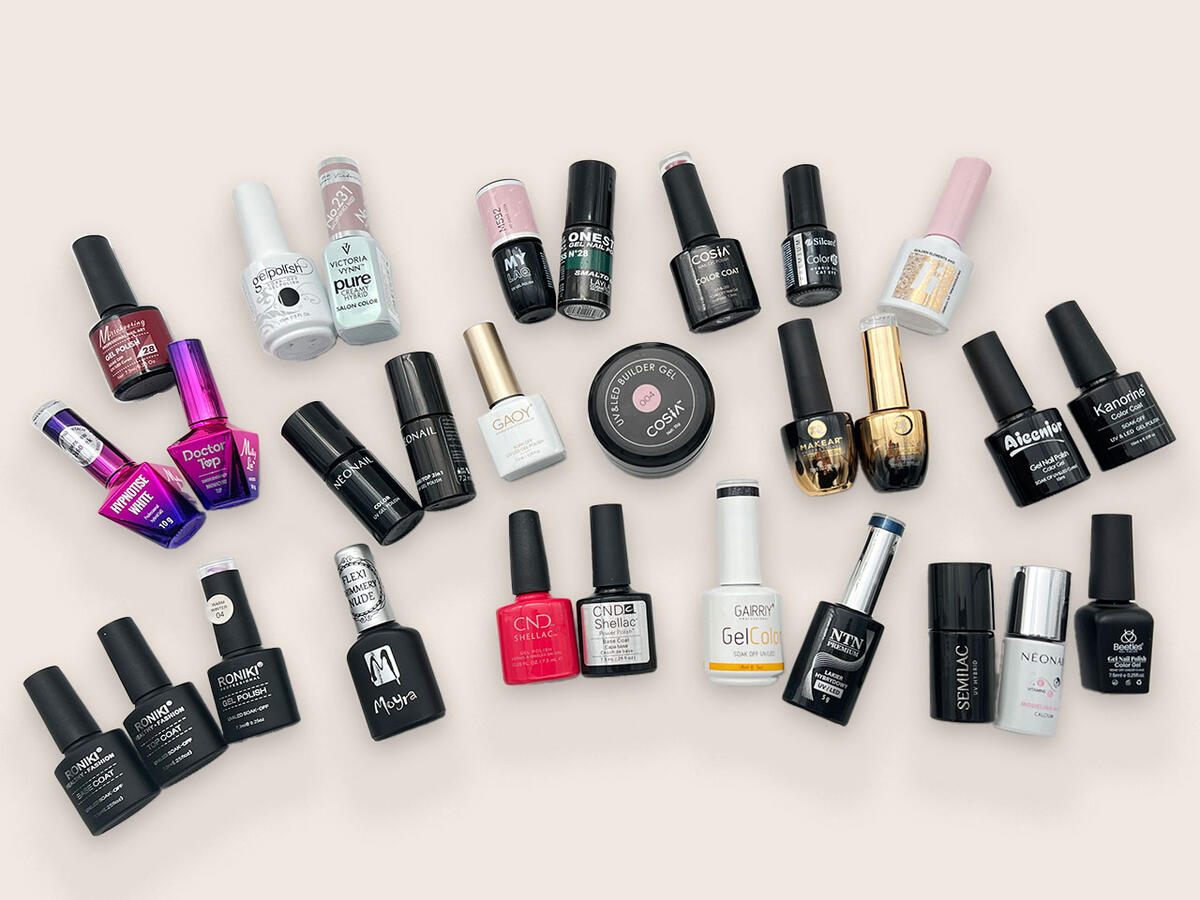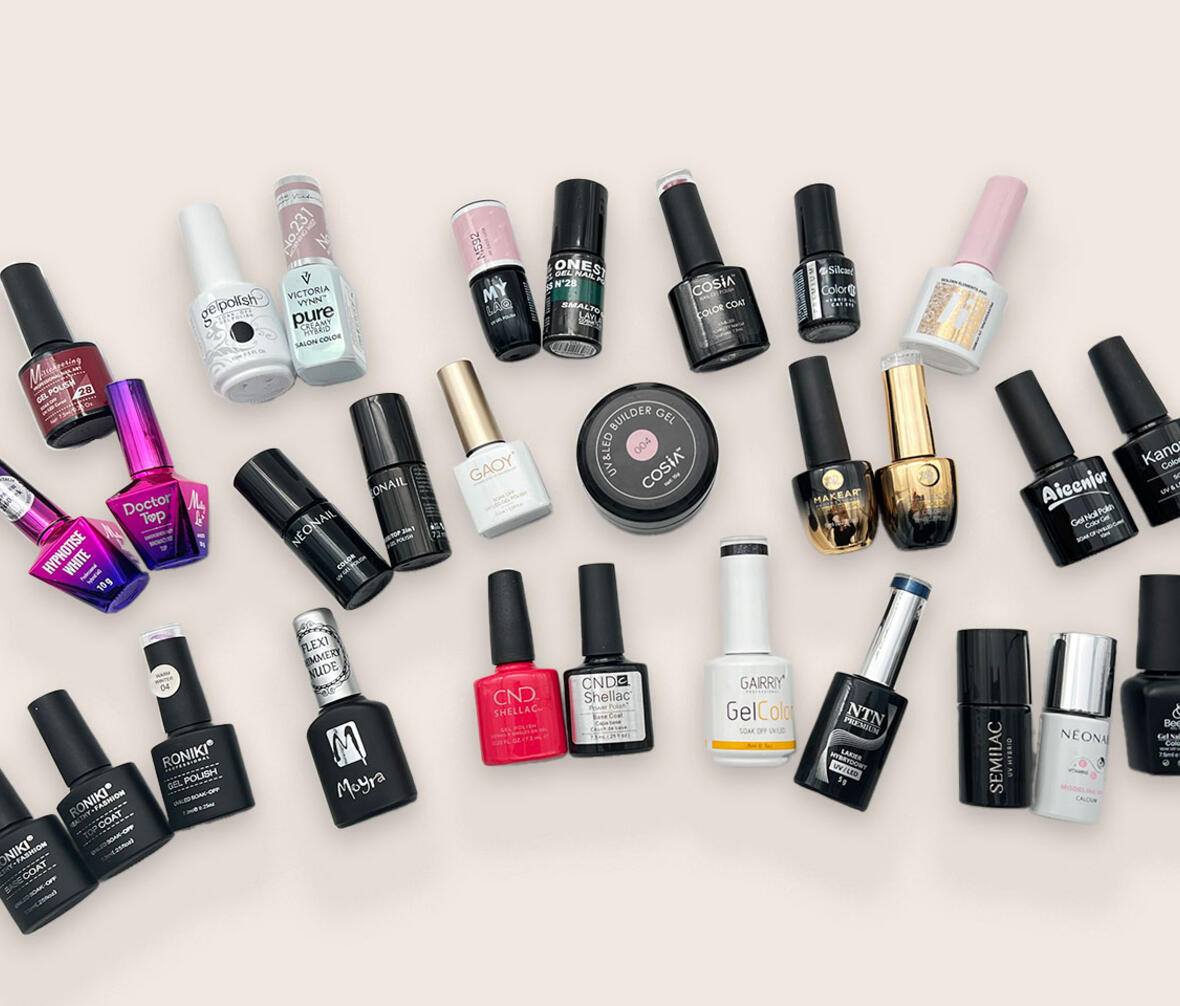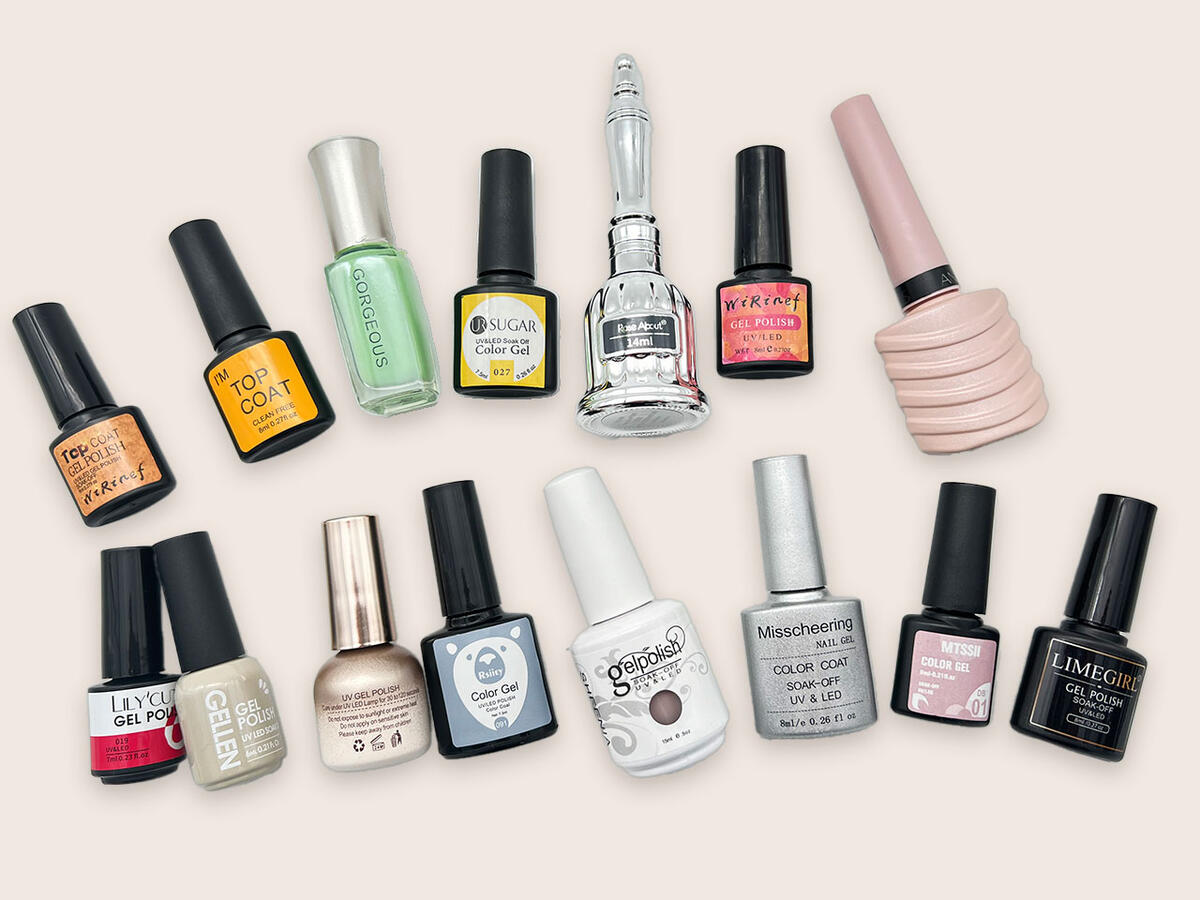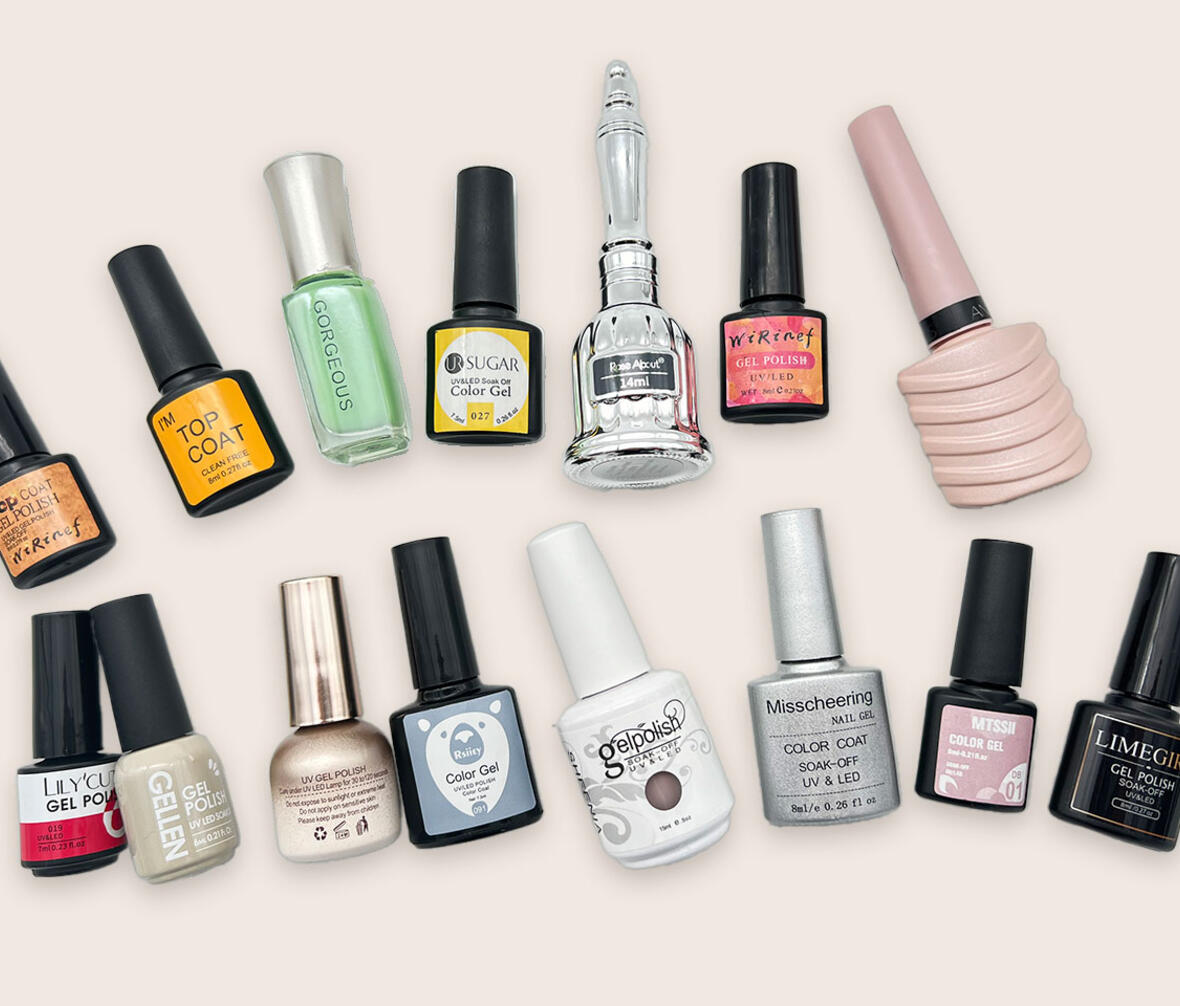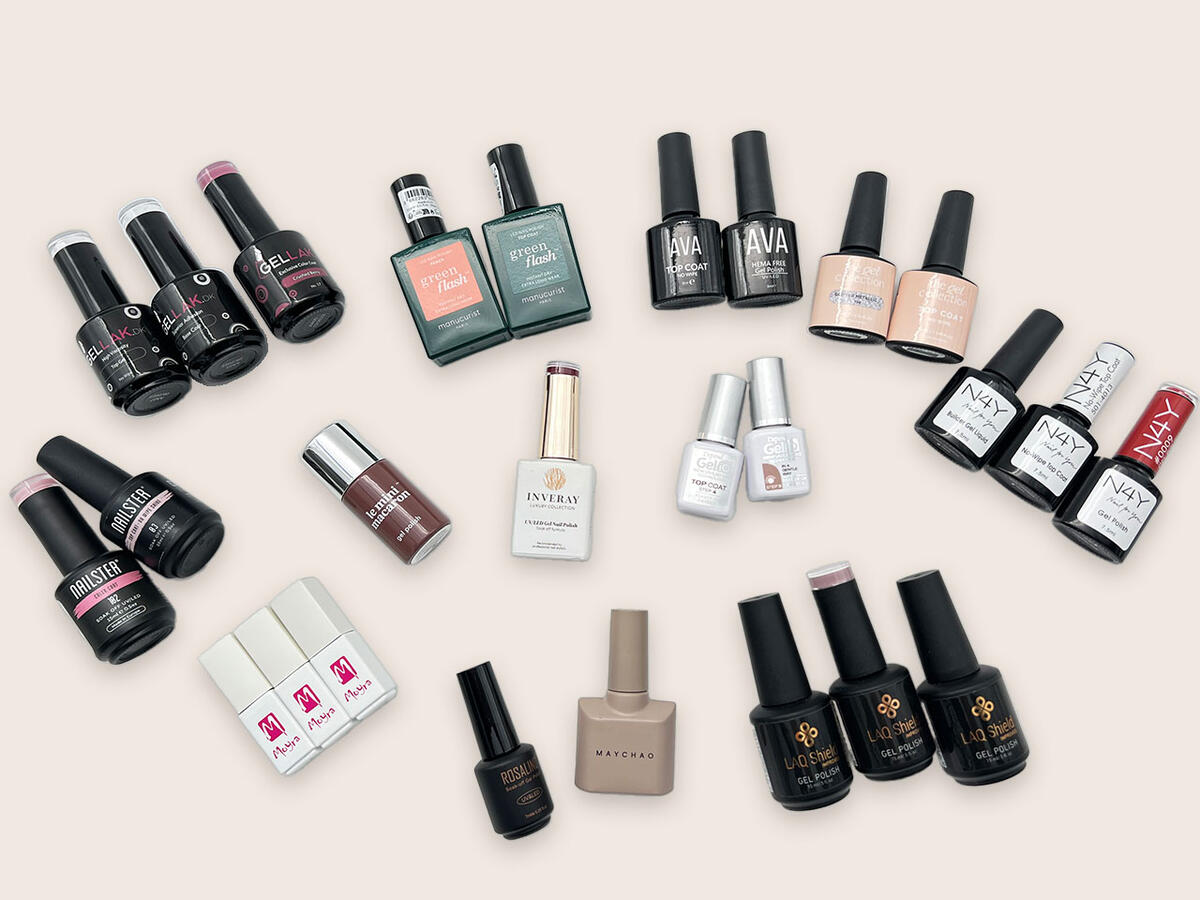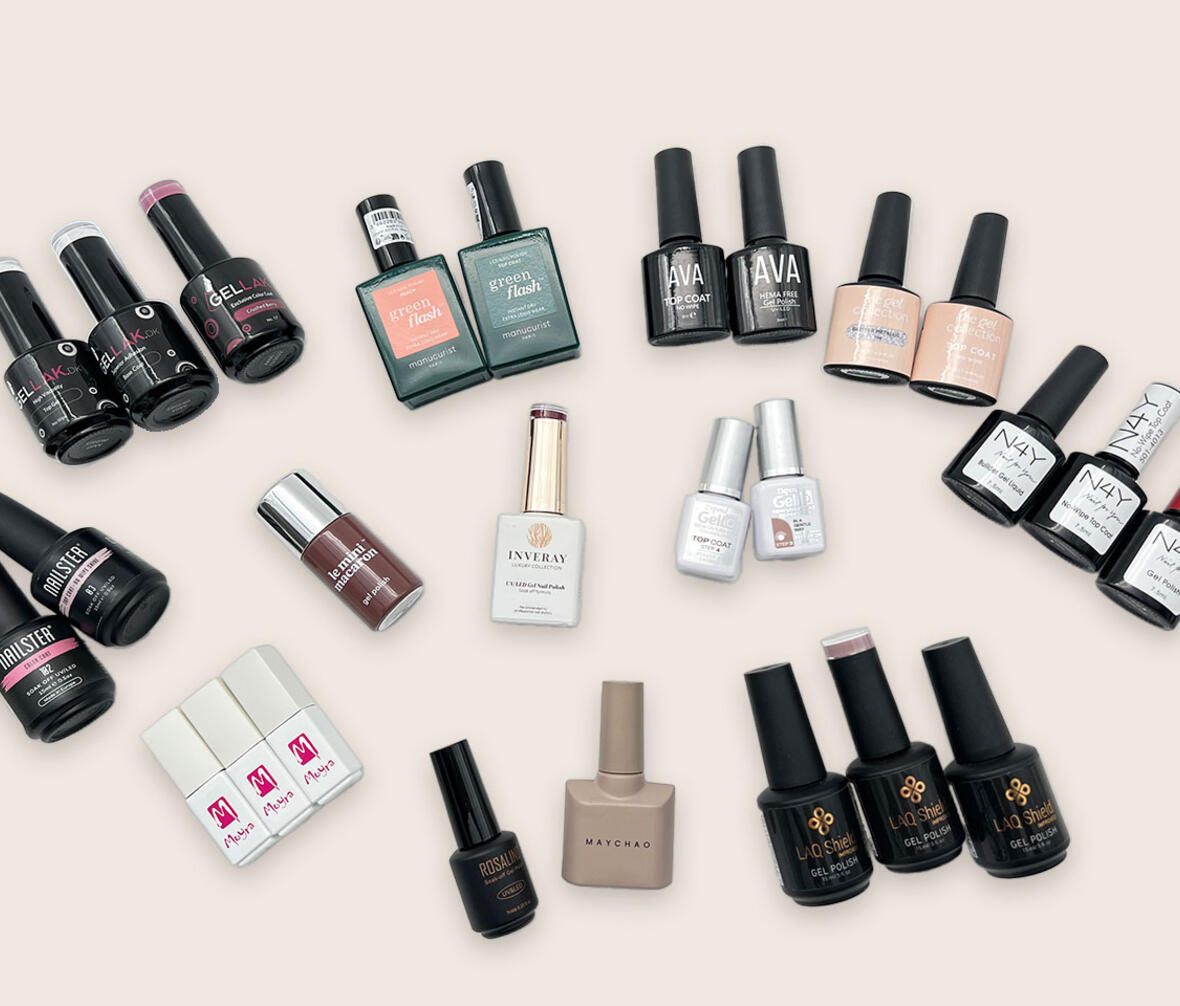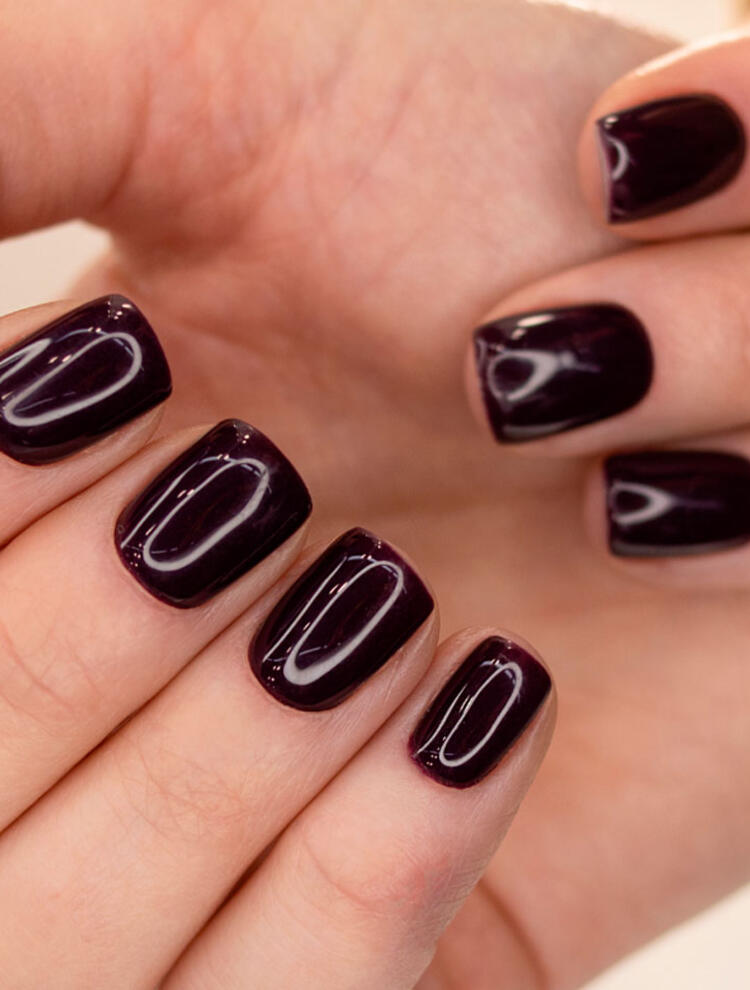
Experts warn against gel polish: "Think twice"
You can achieve beautiful, long-lasting nails with gel polish and a UV lamp. However, a new study reveals that gel polishes contain several problematic substances. Often, there are also errors on the ingredient lists.
Gel polishes always contain acrylates, which may cause allergies when not cured. However, it can be difficult to determine exactly which acrylates or other chemicals are in gel polish.
For gel polishes with a correct ingredient list, about half contain banned substances that can only be used in products for professional use.
This is shown in the study by the Danish Consumer Council THINK Chemicals of 70 gel polishes.
"Fundamentally, we cannot recommend UV-curing gel polish because they generally contain acrylates, that may cause allergy. Allergy can occur if the gel is in contact with the skin around the nail, or if you use the wrong UV lamp that does not cure the polish properly. When there are no reccomended choices, and we find widespread errors on the labels, we have chosen not to evaluate gel polish in our app Kemiluppen," says project manager at the Danish Consumer Council THINK Chemicals, Christel Søgaard Kirkeby.
The product type has now been removed from Kemiluppen.
Unwanted chemicals in gel polish
Gel polish is based on acrylic gel, which you apply to your nails and cure with a UV lamp or an LED lamp.
The acrylates in the gel are a group of substances that may cause lifelong allergies when exposed to them in uncured form.
We have examined 70 types of gel polish purchased in Danish stores and on online platforms, also outside the EU such as SHEIN and Amazon.com. This includes base coat, top coat, and colored gel nail polish.
Our study shows that:
- 29 out of 70 gel polishes with ingredient lists contain substances that are only for professional use.
- 15 out of 70 gel polishes have errors on the ingredients list or no ingredient list at all.
- 26 out of 70 gel polishes are without "professional" ingredients but still contain acrylates that may cause allergies when not cured.
11 gel polishes in the study also contain suspected carcinogenic substances, which were banned in December 2023. These substances are trimethylolpropane triacrylate and benzophenone. The gel polishes were purchased while the substances were allowed. Several manufacturers state that they have phased out the use of these substances.
Allergy from beautiful nails
The main ingredient in gel polish is acrylates.
You can typically experience allergic reactions if:
- The gel polish touches the skin around the nail before it is cured with UV light.
- You do not cure your nails with UV light long enough.
- You use the wrong UV lamp.
Frequency is also a factor. The more you are exposed to uncured acrylates, the greater the risk of allergy.
According to the Danish Allergy Center, allergy can manifest as eczema, redness, swelling, and small blisters on the fingertips. In some cases, the nail may completely or partially detach or become permanently deformed. Symptoms can spread to the rest of the hand or face.
There are also examples of allergic reactions in the lungs among nail technicians. This is because they inhale dust particles when filing artificial nails.
In 2018 and during the pandemic in 2020, the British Association of Dermatologists (BAD) issued warnings about increased cases of acrylic allergy from nail kits that consumers can use at home.
The numbers we have are the tip of the iceberg Jeanne Duus Director of the Danish Allergy Center
Director of the Danish Allergy Center, Jeanne Duus, also sees an increasing number of acrylic allergy sufferers:
"We don't know exactly how big the risk is. We need to know how many people use it and how, as well as have complete figures for allergies. The numbers we have are the tip of the iceberg. But we are seeing more patients with acrylic allergies than before, and it is becoming an increasing problem in Europe."
Wrong UV lamp increases allergy risk
Several manufacturers state that there may be differences in the wavelength of UV light required by different types of gel polish.
Companies can use different photoinitiators in the gel polish to start the curing process, which may require different strengths and wavelengths from the lamp.
If the lamp does not match the polish, you risk poor curing. This increases the risk of allergy.
Problems with dental care, diabetes medication, and hip surgeries
Once you have acquired acrylic allergy from gel polish, it affects more than just rash on the nails. It is a lifelong allergy to substances you may encounter elsewhere.
Acrylates are also used in dental equipment for, e.g., white tooth fillings.
With increased private use of products containing these chemicals, we can expect more people to become sensitive, and this can therefore become a larger challenge. Jan Tore Samuelsen senior researcher at the Nordic Institute for Dental Materials (NIOM)
"Acrylate HEMA is used in many dental products, but there are HEMA-free alternatives. If a patient is allergic to HEMA, the dentist should use materials that do not contain this substance. To avoid materials that can trigger an allergic reaction in the patient, it is important for the dentist to be informed about known allergies," explains senior researcher at the Nordic Institute for Dental Materials (NIOM), Jan Tore Samuelsen, and continues:
"Fortunately, there have been few reported cases of allergy in patients. At NIOM, we have not received inquiries about this, but there are cases in scientific articles. With increased private use of products containing these chemicals, we can expect more people to become sensitive, and this can therefore become a larger challenge." This concern is shared by Jeanne Duus.
"We have only seen a few patients with acrylic allergy who have reacted allergically to dental treatment, but it is possible that it will become a problem for more people in the future."
Acrylates are also used as bone cement in knee and hip surgeries, and in the patches that attach insulin pumps and glucose sensors to the skin of diabetes patients.
The banned substance HEMA in several gel polishes
Acrylates are a large group of substances. Two commonly used acrylates have been banned in consumer products. These are the substances HEMA and Di-HEMA trimethylhexyl dicarbamate. We have found 22 gel polishes in the study with one or both of these substances.
They are known to be allergenic when they come into contact with the skin and are therefore only allowed in gel polish for professional use. However, as a private individual, you can easily buy them online.
We have also found other substances in the gel polishes that are only for professional use.
These include hydroquinone, which is suspected of being carcinogenic, trimethylbenzoyl diphenylphosphine oxide, which is suspected of harming reproductive health, and p-hydroxyanisole, which is allergenic.
"We have purchased as consumers, and we have been able to obtain many professional products. So, you can easily end up buying them without realizing that they are actually not intended for home use," says Christel Søgaard Kirkeby.
Legislation requires labeling on the product, clearly stating, for example, "for professional use only," but there are no requirements regarding where you may sell the products.
When these substances are so problematic that we as consumers should not use them, legislation must ensure that we cannot buy them Christel Søgaard Kirkeby Project manager at the Danish Consumer Council THINK Chemicals
The Danish Environmental Protection Agency has previously stated that it is difficult to enforce the sale of professional products to consumers.
"It is not good enough protection for consumers. When these substances are so problematic that we as consumers should not use them, legislation must ensure that we cannot buy them," says Christel Søgaard Kirkeby.
Alternatives can also cause allergies
The substances HEMA and Di-HEMA trimethylhexyl dicarbamate are being phased out in several products and replaced with alternative acrylates.
However, other acrylates can also be allergenic. The Danish Allergy Center states that the acrylates resemble each other, leading to what is called cross-reactions or cross-allergies.
"It's a larger family of substances, many of which are chemically similar. This means that if you are allergic to one in the acrylate family, such as HEMA, you will often react to many others," says Jeanne Duus.
Is HEMA-free gel polish a safe choice?
You can find several gel polishes marketed as "HEMA-free."
Even if a gel polish is without the allergenic acrylate HEMA, it still contains other acrylates that can cause allergies. There may be differences in how allergenic these substances are, but you cannot expect to find a UV-cured gel polish without allergy risk.
A mess of ingredient lists
The study also shows that 15 out of 70 gel polishes have significant errors and deficiencies on the ingredient list.
Some gel polishes have incorrect or imprecise descriptions of the substances on the label. Others do not have an ingredient list at all, so we do not know what is in them.
It is especially gel polishes from Shein and Wish that have major problems with declaration.
I have never before experienced errors with declarations on such a large scale as with gel polishes Christel Søgaard Kirkeby Project manager at the Danish Consumer Council THINK Chemicals
"It iclearly shows that if you buy on online platforms outside the EU, you cannot expect them to comply with EU rules on declaration. We encourage you not to buy products here - even if they are cheap. Because you have no idea what you are getting in the shopping cart of unwanted or restricted chemicals," explains Christel Søgaard Kirkeby.
She also explains that several companies state that they have mistakenly used an old package with a completely wrong ingredient list.
"I have never before experienced errors with declarations on such a large scale as with gel polishes. Basically, it can be difficult to trust the information, even if it is there," she says.
Finnish study: The declaration on gel polish does not match the content
A Finnish study of gel polish generally showed a difference between the declared acrylates on the product's ingredient list and the acrylates found through chemical analysis of the products. They tested a total of 31 gel polishes and 6 acrylic nails. This supports the difficulty in trusting the declaration on gel polish.
Experts' advice on gel polish
We have asked experts for their best advice for consumers who want to apply gel polish to their nails.
Jeanne Duus from the Danish Allergy Center advises caution:
"Think twice. You should consider the product as a 'chemical' product that you should handle with care. If you decide to do it, you should be very careful that the gel polish does not come into contact with the skin, around the nail, or elsewhere. Make sure to cure the nail polish with the UV lamp according to the instructions and perform it on a surface that can be cleaned and removed."
Project manager at the Danish Consumer Council THINK Chemicals, Christel Søgaard Kirkeby, says that you should consider the health risks:
"There is a risk of allergy from the gel polish, and that allergy lasts a lifetime. I think you should consider whether it's worth it. If it is, then go to a professional who can avoid hitting the skin and ensure that the polish cures correctly."
More good advice on gel polish
If you want to apply gel polish to your nails or have artificial nails made with gel or acrylic, we have gathered four good pieces of advice:
- Consider whether you can replace the use of gel polish with regular nail polish. There is not the same risk of allergy.
- Find a skilled and professional nail technician who does not hit the skin, uses a customized UV lamp, and has extraction, so you avoid inhaling vapors and particles. This reduces your risk of allergy.
- If you have symptoms, such as eczema, from gel polish and artificial nails, we recommend that you report it to both authorities and the manufacturer. They can follow up - especially if many experience the same thing.
- If you experience an allergic reaction, you should immediately stop using gel polish. Talk to your doctor and get help to find out what you cannot tolerate.
Still want to use gel polish at home? See these six tips:
- It is very important to avoid getting the polish on the skin. If you cant avoid hitting the skin, go to a professional or get help from someone else.
- Read and follow the instructions carefully. This applies to both the gel polish and the lamp.
- You can remove gel polish with acetone. But be aware that acetone can de-grease the skin, and if you repeatedly use acetone, it can cause dry and cracked skin.
- Avoid inhaling vapors - ventilate during use.
- Do not inhale nail dust. Instead of removing gel polish with acetone, you can have the polish filed away by a nail technician or with an electric nail file. Here you should be careful not to inhale the particles. They are unwanted for the lungs, and there are several examples of allergy from nail dust.
- Stop using the products if you get a rash or discomfort on the skin or nails.
About the survey
-
We have purchased and checked the ingredient list of 70 different types of gel polish. We have not tested the content or verified if the ingredient list is correct. We have been in contact with the companies and discussed the results with them.
We have examined both basecoat, topcoat, and gel polish for nails.
All products were purchased in stores or online shops where ordinary consumers can also buy them.
We have also bought gel polish outside the EU from, among others, Shein, Fruugo, Amazon, and Wish.
-
29 out of 55 gel polishes with an ingredient list contain chemicals that are only allowed for professional use. These are:
-
Di-HEMA trimethylhexyl dicarbamate, which is an allergenic acrylate. The substance is not allowed in products for private use, only for professional use. We found the substance in 15 products.
-
HEMA, which is an allergenic acrylate. The substance is not allowed in products for private use, only for professional use. We found the substance in 19 products.
-
Trimethylbenzoyl diphenylphosphine oxide, which is a photoinitiator suspected of harming fertility. It is also allergenic. The substance is only allowed in products for professional use. We found the substance in 15 products.
-
P-hydroxyanisole, which can be used as a stabilizer in gel polish, is allergenic. The substance is only allowed in products for professional use. We found the substance in 8 products.
-
Hydroquinone, which can be used as a stabilizer in gel polish, is suspected of being carcinogenic and harmful to genetic material. It is also allergenic. The substance is generally prohibited in cosmetics and care products, except for products for professional use in artificial nails. We found the substance in 4 products.
Other chemicals:
-
Trimethylolpropane triacrylate (an acrylate), which is suspected of being carcinogenic. It is also allergenic and can be problematic for the environment. The substance has been banned in cosmetics and care products in the EU since December 2023. We found it in 9 products. The substance was legal when we purchased the products. Several manufacturers have stated that they have phased it out.
-
Benzophenone (a sunscreen), which is suspected of being an endocrine disruptor and possibly carcinogenic. The substance has been banned in cosmetics and care products in the EU since December 2023. We found the substance in 2 products.
Additionally, a number of allergenic acrylates and photoinitiators have been found. Acrylates will generally have "-acrylate" as part of the name.
-
-
Ingredients for professional use only:
- HEMA
- Di-HEMA trimethylhexyl dicarbamate
- Trimethylbenzoyl diphenylphosphine oxide
- P-hydroxyanisole
- Hydroquinone
As a consumer, you should steer clear of gel polishes with these substances. They are assessed to be so problematic that only professionals should use them. This is because professionals are deemed better able to target the nail, while you may have difficulty avoiding the skin.
Banned substances:
- Trimethylolpropane triacrylate
- Benzophenone
Both ingredients have been banned in cosmetics and care products since December 2023. Products containing these substances may no longer be sold. Avoid gel polishes with these substances.
Acrylates:
If you use gel polish, avoid the above substances. However, you should still be aware that all UV-cured gel polishes contain acrylates that can cause allergies.
